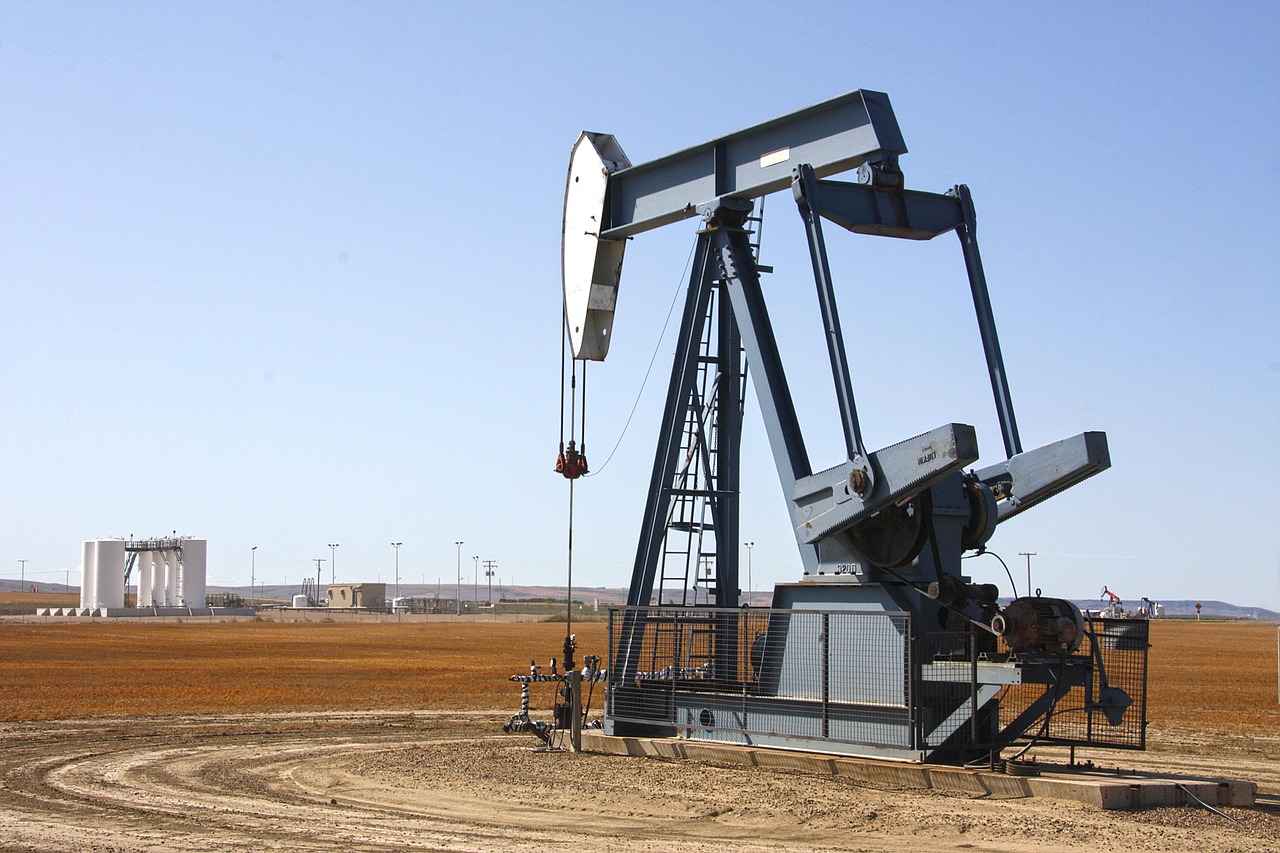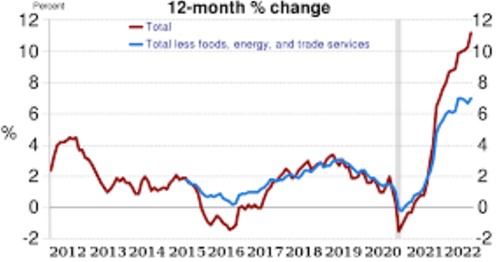FORECASTS & TRENDS E-LETTER
by Gary D. Halbert
May 17, 2022
IN THIS ISSUE:
- President Plans More Oil Sales From Emergency Stockpile
- Government To Immediately Start Buying The Oil Back
- Inflation Exploding – Wholesale Prices Surge 11% In April
President Plans More Oil Sales From Emergency Stockpile
The White House said last week it is prepared to begin large sales of crude oil from the nation’s Strategic Petroleum Reserve (SPR). President Biden wants to sell off about 40% of the SPR’s crude reserves, which he says will bring down oil and gasoline prices – even though he and his advisors know it would only be a temporary drop in prices, if at all.
Q1 2022 hedge fund letters, conferences and more
Gasoline prices have soared to a record high this year with the national average price of a gallon of regular unleaded gasoline rising to about $4.50 per gallon; in some areas the price is well above $6.00 per gallon. The president claims the sales from the SPR will bring down gas prices significantly, but most energy analysts disagree and warn prices could go even higher when the government moves to replenish the Reserve later on. This makes absolutely no sense!
The Strategic Petroleum Reserve currently has 565 million barrels of crude oil stored around the country. If the president goes through with his plan to sell 40% of the SPR oil, that number will fall to around 385 million barrels, the lowest level since 1984, the Energy Department says.
We keep this oil in reserve for national security reasons, to insure we have a source we can tap in case there are unexpected supply interruptions. President Biden offers no good reasons for why he wants to sell the Reserve down by 40%, other than to bring down gasoline prices at the pump – conveniently just before the mid-term elections in November when the Democrats look to get crushed.
The president admits we will have to replenish the SPR to its current level of 565 million barrels at some point in the near future. The oil to replenish the SPR will be purchased at today’s much higher prices than what was paid for the oil now in the Reserve, most of which was purchased decades ago at much lower prices.
Some energy analysts argue that crude oil prices could rise to even higher highs as the government buys oil to replenish the SPR to its current level in the next year after the sales are completed. Again, this makes absolutely no sense, but President Biden vows he’s going to do it anyway.
Let’s think about how this happens logistically. The president will sell the 180 million barrels of crude to, who else, the big oil companies. It remains to be seen if the physical oil will actually change hands, but based on what the Energy Department says, there will be physical delivery of the oil – meaning there will be expensive shipping and handling costs.
In any event, the thought is these sales of oil from the Reserve will serve to bring down crude prices and lower gasoline prices at the pump for consumers. Never mind that prices are expected to go right back up again when the government starts buying oil to replenish the Reserve later on. Also, never mind that some energy analysts warn oil prices could go even higher than today’s record levels.
For all these reasons, President Biden’s plan just doesn’t make any sense. Yet he’s going to do it anyway; the first sales have already begun. Thirty million barrels were sold last month. Another 90 million barrels are to be sold between now and the end of July, the Energy Department announced in April. All sales of the 180 million barrels are to be completed by this fall.
Government To Immediately Start Buying The Oil Back
I wish that was the end of this story, but it is not. The Energy Department announced in the first week of May that it intends to start buying oil to replenish the SPR as soon as the sales are completed this fall.
It said the bidding process will begin in the fall, with a goal of replenishing about one-third of the 180 million barrels released before the end of this year. The rest would be replaced in the first half of next year. Again, this raises the question: Why do it in the first place?
The department said in a statement that it has timed the buyback and subsequent delivery for when it projects oil prices to have dropped significantly. It did not offer details on when delivery will take place. I would argue the timing of the delivery makes no difference; the markets know exactly what’s going to happen and will be priced accordingly well in advance.
This raises a question the White House and Biden’s advisors have obviously not thought about. With the government’s plan so widely known, there may not be a significant drop in oil prices as the Biden administration widely expects. The futures markets, as the name implies, reflect the future price of commodities.
** Crude oil price today $105; Dec crude futures at $96; not much of a drop.
If the markets know the Biden administration is going to sell 180 million barrels of oil and then buy it right back over the next six months to a year, there may not be any significant drop in the price of oil. Think about it, why would there be? It’s what we in the business might call a “wash sale.”
Yet the Biden administration wants us to believe they know what they’re doing. US Energy Secretary Jennifer Granholm said earlier this month:
“As we are thoughtful and methodical in the decision to drawdown from our emergency reserve, we must be similarly strategic in replenishing the supply so that it stands ready to deliver on its mission to provide relief when needed most.”
Again, this raises the question: Why do it in the first place and incur all this expense for nothing?
The oil companies have to be licking their chops over this deal. They’ll make money on both sides of the transaction, buying the oil at a discount and selling it back at a premium. And if the physical oil actually changes hands, big oil will make even more money on the shipping, handling and storage. It will be a bonanza for them.
How does the Biden administration not know this is such a bad deal? Who knows, maybe they do and just don’t care. But the point is, not only will it be extremely expensive, it may not work – the price of oil may not come down significantly, if at all. Put differently, this could be one giant flop!
Inflation Exploding – Wholesale Prices Surge 11% In April
The most-watched inflation indicator, the Consumer Price Index, surged by the most in 40 years in March and April, rising by over 40% year over year. We all see it in the prices we pay at the gas pump, in grocery stores and elsewhere. We wish it would stop, but other indicators suggest the price increases are not done yet.
The Labor Department reported last Thursday that the Producer Price Index, which measures wholesale prices paid by manufacturers, jumped at an annual rate of 11% in April. That reading was actually down slightly from the 11.5% reading in March, but for the two months wholesale prices are up 11.25%, the highest level in nearly 40 years.
Producer Price Index (Wholesale Prices)
Source: US Labor Department; chart courtesy of Wikipedia
Forecasters had expected a rise of 10.7% in April, so the latest report once again came in above the pre-report consensus among economists.
Core inflation at the wholesale level, which excludes the more volatile measurements of food and energy, increased 0.6% for the month, following a 0.9% increase in March. Over the past 12 months, core prices were up 6.9%, also the highest in decades.
Overall, prices for goods jumped 1.3% last month, the fourth consecutive rise and the biggest contributor to the headline inflation figure. That included gains for items like motor vehicles, diesel fuel and eggs. Prices for construction also soared by 4% in April, while prices for services held steady last month.
Be sure to read the first column in Special Articles below. It contains some eye-opening facts and figures on the latest rise in inflation. I think you’ll be surprised.
Sky-high inflation has created a political headache for President Biden – who has blamed rising prices on the war in Ukraine, as well as pandemic-related disruptions in the supply chain – and has forced the Federal Reserve to chart an even more aggressive course to cool demand and bring inflation down.
The Fed now faces the tricky task of cooling demand and inflation without dragging the economy into a recession. The central bank hiked its key Fed Funds rate by 0.5% at its most recent policy meeting in March to 0.75%-1.00%, the largest one-time increase in 22 years. It is widely expected to hike the rate by another 50 basis points at its next meeting on June 14-15, and quite possibly at several meetings thereafter, as the Fed is struggling to get inflation under control.
It will be interesting to see how this plays out. I’ll keep you posted, as always, as things develop.
All the best,
Gary D. Halbert
Special Articles


